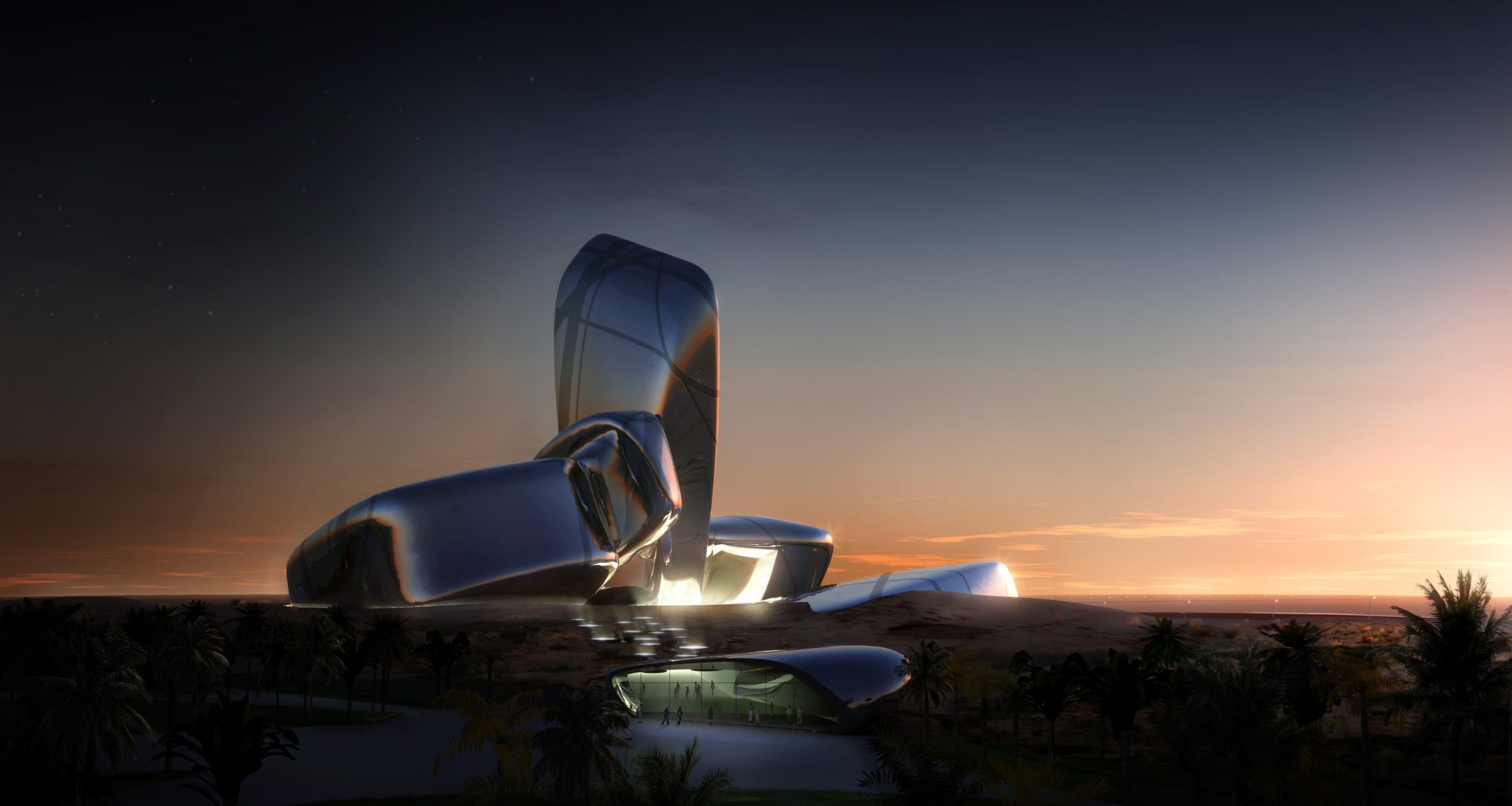
For the past decade, the world’s richest oil company, Saudi Aramco, has been planning a vast cultural center in Dhahran, Saudi Arabia. Now, the state-owned company’s mega-project, the King Abdulaziz Center for World Culture, is finally nearing completion.
It was due hold a preview of an Islamic art exhibition organized by the Los Angeles County Museum of Art (LACMA) as part of its long-awaited soft opening this weekend. But a meeting of the Arab League took precedence, a spokesman for the center confirms. Topics on the agenda range from conflict on the Gaza Strip, in Syria, and the Yemen.
LACMA isn’t the only high-profile institution with which the center is collaborating. At the end of March, the Smithsonian Institution and National Geographic also came on board, signing a memo of understanding with the center. A spokeswoman for the Smithsonian tells artnet News that future projects could include exhibitions or loaned artifacts, but stresses that the memo does not cement an official partnership but rather “an agreement to explore potential collaborations.”
In February, Alice Walton, the founder of the Crystal Bridges Museum of American Art, visited the center. In a video posted on social media, Walton praised the new center’s architecture and added that she hoped to “find ways to work together.”
The copper ceiling of the Great Hall, King Abdulaziz Center for World Culture, courtesy of Snøhetta.
The King Abdulaziz Center has been designed on a monumental scale by the Norwegian architecture firm Snøhetta. The futuristic structure rises in the desert, symbolically sited near the Prosperity Well, the kingdom’s first commercial oil well. The building includes an 18-floor, 90-meter-tall “Knowledge Tower,” where students will study science, technology, and the arts.
At the gleaming tower’s base is a cluster of buildings that houses the museum, an Arabic- and English-language library with shelving for more than 730,000 volumes, a cinema, theater, and the “Great Hall,” which is designed to host international touring exhibitions, festivals, and conferences.
The debut exhibition, “Beauty and Identity: Islamic Art from the Los Angeles County Museum of Art,” will present around 130 objects, including Mughal Indian and Moorish Spanish artifacts.
Damascus Room, Syria (1766–67), courtesy of LACMA.
But the star loan, being shown for the first time in Saudi Arabia, is the Damascus Room, a lavishly decorated late-18th century interior from Syria. The King Abdulaziz Center funded the conservation of the room, which LACMA acquired in 2014. Originally a reception area used to entertain esteemed guests, the space was dismantled and exported from Syria when the house was torn down to make room for a road in 1978. It remained in storage for decades.
The British Museum has also advised on the oil-funded cultural complex, helping to organize a forthcoming exhibition of calligraphic arts with the working title, “Beyond the Pen.” A spokeswoman for the British Museum confirms that it advised on the exhibition, which includes contemporary art. But she says the museum did not lend any work to the show and that it “has not been involved for some time.”
The new center is closely aligned with Prince Mohammed bin Salman’s “Vision 2030,” which aims to wean the kingdom off dependence on its oil reserves. According to the center’s website, it is designed to “to energize the next knowledge economy of Saudi Arabia.”
The crown prince has been investing very publicly in cultural initiatives both within and outside Saudi Arabia. (He also, of course, is believed to be the buyer of Leonardo da Vinci’s record-setting Salvator Mundi.) During his ongoing tour of the US this week, his Misk Art Institute has staged events along his route, including pop-up exhibitions of work by Saudi artists in New York, Los Angeles, and Washington, DC.